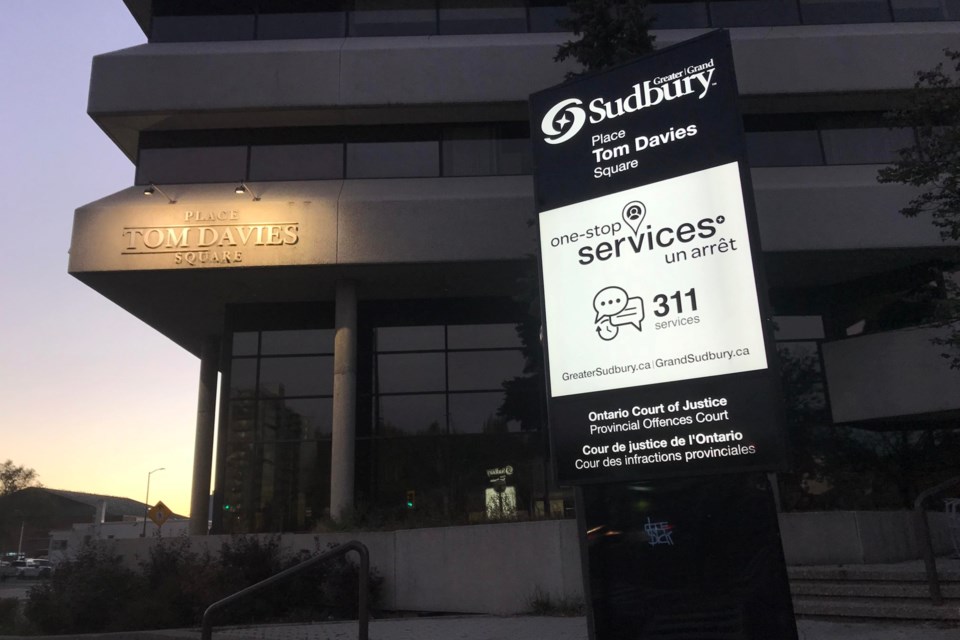Approximately 43 per cent of the City of Greater Sudbury’s annual budget is spent on wages and benefits, which is much greater than some other municipalities.
Although he doesn’t refute the accuracy of this statement, Kevin Fowke, the city general manager of corporate services, told Sudbury.com there’s important context to consider, in that the City of Greater Sudbury offers a much broader range of services than most other municipalities.
Stripped of this context, the number has been making its rounds throughout the civic election campaign trail, with candidates citing it as evidence of excessive wages.
During a Sept. 26 debate among Ward 7 candidates at the Capreol Arena, all four candidates latched onto the statistic. Randy Hazlett pushed for an audit to address “duplication of staff,” Daniel Wiebes questioned how much redundancy there is at city hall, and Natalie Labbée said when looking at areas of city finances to tackle, “the big one is wages.”
“Dumbfounded” to see the amount of money spent on wages and benefits, Mark McKillop said to cheers from the audience. “As a city councillor, you can be very confident that this man standing in front of you can hardly wait to get his teeth into it,” he said.
Mayoral candidate Miranda Rocca-Circelli cited the 43 per cent figure during the Oct. 1 candidates debate at the Older Adult Centre as rationale for an audit.
Providing context at the request of Sudbury.com, Fowke confirmed the 43 per cent figure is close, though his latest estimate is 43.5 per cent.
“Sudbury is the ultimate in single-tier municipalities,” he said, adding the city offers a full range of services, which bolsters overall wages and benefits for the largely service-based organization.
The city uses the Municipal Benchmarking Network of Canada to compare Greater Sudbury against other municipalities.
Pages 9-10 of their 2020 report outline the various services delivered among the 15 municipalities being compared, including such things as emergency shelters, fire services, police services and other things. Greater Sudbury is one of only four municipalities to deliver on all 36 services listed, the others being Windsor, Toronto and Hamilton.
Prior to amalgamation, the City of Sudbury had a regional municipality to lean on, which broke up certain services, Fowke explained, noting the City of Greater Sudbury now carries the full breadth of services.
“A lot of municipalities in Southern Ontario are still part of that two-tier structure,” he said. “All of the services in a region might be in a different place, and so might the salary and benefits dollars be if you’re comparing those cities.”
Barrie is often compared to Greater Sudbury due to it being close in population to Greater Sudbury. In a 2020 comparison of municipalities, Barrie’s population was 151,043 against Greater Sudbury’s 161,531.
At the same time, Barrie had a full-time equivalent staffing complement of 1,472 people against Greater Sudbury’s 2,579.
Why is that?
“It has Simcoe County,” Fowke said, adding that various services benefitting Barrie will be included in Simcoe Country’s wages and benefits numbers, including long-term care.
Greater Sudbury’s Pioneer Manor long-term care home alone includes more than 400 city employees, Fowke said, similar to the number of Greater Sudbury Police Service members.
“If they don’t have all of the services that are offered, of course you’re going to have more salary dollars on your report,” he added. “Many places will not have long-term care, police and their transit, especially amongst the larger cities.”
Further complicating things is the number of contractors municipalities take on to fill out their workforce, who are not considered city employees.
The City of Greater Sudbury has been pushing toward hiring more municipal employees, Fowke said, having found various services to be more expensive with contractors.
“We’re better off, and it was a good strategy at the time for sure, but now in this tight labour market, we’re better off having some of our own people being able to do this from a service continuity and service quality point of view than constantly having to go to tender or RFP.”
Wages and benefits have been a common point of conversation at Tom Davies Square, where 540 employees earned greater than $100,000 in 2021.
As reported last year, wages among the city’s non-union staff trail behind other comparable municipalities. At the time, city CAO Ed Archer reported that 10 of the city’s 13 non-union play groups were below the 50th percentile among a list of municipal comparators, indicating they earn less than the median.
The city council-approved list of comparators Greater Sudbury uses includes: City of Barrie, City of Burlington, City of Cambridge, Municipality of Chatham-Kent, City of Guelph, City of Kingston, City of Kitchener, Town of Markham, Town of Oakville, Town of Richmond Hill, City of St. Catharine's, City of Thunder Bay, City of Vaughan and the City of Windsor.
Earlier this year, city council voted to ensure all city employees earn a living wage, which at the time was estimated at $16.98 per hour, and compensation levels for the city’s elected officials are expected to be reviewed next year.
Tyler Clarke covers city hall and political affairs for Sudbury.com.
